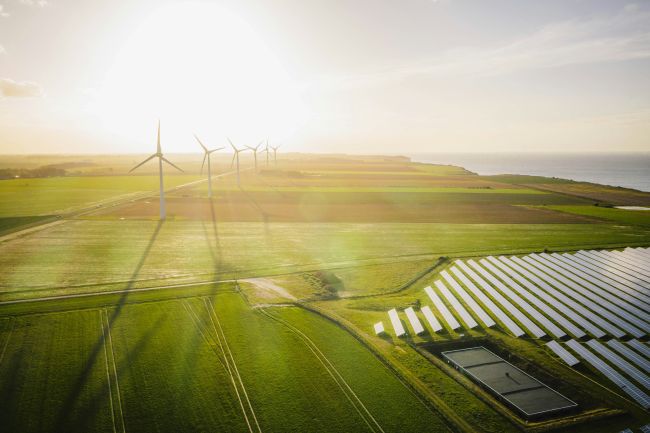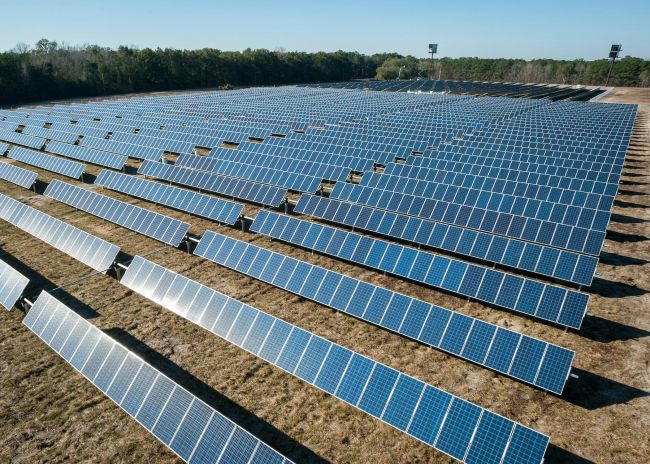Heat networks and big wind capacity: Where is Scotland on net zero in 2025?
Scotland’s vast wind potential shines, but lagging heat networks risk slowing its 2025 net zero ambitions.

It has been nearly five months since I began my role at Amberside Advisors, and with the new UK Government’s first-year legislative agenda, the focus on energy transition and the need for an optimised public-private investment model is undoubtedly clear.
Across the UK, the 10-year industrial strategy, the Comprehensive Spending Review and high-level planning reforms have all set out policies that will continue to push forward the energy transition.
Great British Energy has been allocated £8.3 billion to support renewables and nuclear with an eye to attracting £60 billion of investment from the private sector. The Clean Power Action Plan outlined ambitions for 45–47 GW solar, 43–50 GW offshore wind and 27–29 GW onshore wind in the next five years by 2030. And over £13 billion has been announced for the Warm Homes Plan, aimed at retrofit energy efficiency measures, heat pump roll-outs and low-carbon technology.
All Government policy is geared towards driving private investment. The 10-year Industrial strategy focuses on private sector engagement and the role of private capital in infrastructure projects with an emphasis on place-based delivery, coordinated through the National Infrastructure Service and Transformation Authority (NISTA). Let’s hope that combining the ‘spending power’ of the National Wealth Fund (NWF), with the strategic delivery perspective from NISTA, will indeed deliver the transition sought from the UK infrastructure sector.
Net Zero in Scotland
While energy policy and planning are devolved to the Scottish Government, these policies also positively impact the sector in Scotland, which is set to play an outsized role in the UK’s pathway to net zero.
GB Energy is to be headquartered in Aberdeen, Grangemouth on the Firth of Forth Estuary is home to the Acorn carbon capture and storage (CCS) cluster, and Scotland’s potential for wind power (with 48% of the UK’s wind power capacity already hosted here) could see its role in the industry reach new heights. Meanwhile, a pipeline of 64 infrastructure projects is planned under the Scottish Government over the next 10 years. These include Inch Cape windfarm in the North Sea that will see 72 wind turbines powering the equivalent of half the homes in Scotland, three battery storage systems that will be the largest in Europe and £20 billion for grid upgrades by SSE Transmission in the North of Scotland.
However, in the realm of devolved legislation, there is room for improvement. The Heat in Buildings Bill could be one of the most significant upcoming legislative changes to Scotland’s net zero efforts, but it has been repeatedly delayed.
Conceived of and put out to consultation between 2021 and 2023, the bill has been subject to several changes under different administrations, largely due to concerns of cost to the consumer. In its current form, it will require all homes and businesses to use a clean heating system by 2045 and impose minimum energy efficiency standards for all homes by the end of 2033, with private landlords subject to this by 2028. What remains to be seen is how much ‘stick or carrot’ will be used to reach these goals?
70% of the Scottish population lives in the ‘central belt’ that runs between the east and west coasts and the two major cities – Edinburgh and Glasgow – with 1.8 million (33%) living in the Greater Glasgow area alone. Meanwhile, roughly a third of people in Scotland live in tenements, which are largely unsuitable for retrofitting with external insulation or individual heat pumps.
For dense urban housing like this (not to mention public and commercial buildings), low-carbon heat networks are the most suitable choice for decarbonisation, but only 2% of domestic heat in Scotland is delivered by heat networks. The challenge to reach Scotland’s net zero targets remains significant, with a requirement to quadruple heat network capacity to 8% by 2030, with little progress in recent years.
Is Scotland falling behind in attracting heat network investment?
In their approach to city-wide and localised decarbonisation efforts, the Scottish Government is yet to show serious intent in the way the Department for Energy Security and Net Zero (DESNZ) has done with their Advanced Zoning Program (AZP).
In October 2024, six areas across England (Leeds, Plymouth, Bristol, Stockport, Sheffield, and two in London), were awarded £5.8 million to develop their zones with spades in the ground from 2026.
This Heat Network Zoning Pilot follows on from a total of £621 million in grants awarded via the Green Heat Network Fund (GHNF) to 63 projects, with a further £100 million offered for 8 projects in the latest funding round.
While the AZP is by no means perfect, it offers a consistent framework to attract developer investment, as private finance will play a crucial role in decarbonising heat. Without a similarly joined-up approach, which includes legal and commercial support at a ‘macro level’ for Local Authorities, Scotland risks falling behind in attracting heat network investment. It becomes too onerous for Local Authorities to progress projects individually, and too risky to attract the necessary private capital outside of the major population centres.
Place-based and area-based investment has been a popular term in recent years, arguing for the benefits of aggregated investment opportunities which lend themselves to blended finance mechanisms. These can also be applicable to Scotland’s many lower-density areas and were the focus of a recent report from Scottish Futures Trust on the challenges facing the Scottish Social Housing sector specifically. The report notes how place-based financing could help enable progress and give smaller rural landlords opportunities to “participate (rather than lead)” in wider area initiatives. In many ways, this mirrors the logic of scaling and aggregation, while adapting to Scotland’s more dispersed housing and community landscape.
Significant private investment is essential to bridge the funding gap for net zero as a whole, and for decarbonising heat in Scotland in particular.
The opportunity from patient capital
£40–50 billion per year from private sources into infrastructure like energy, digital, transport, and water is required for British infrastructure. The Mansion House Accord (May 2025) commits 17 of the UK’s largest defined-contribution pension schemes to allocate 10% of assets to private markets, with over £25 billion earmarked for UK infrastructure and other growth projects.
Private and patient capital will play a crucial role in heat decarbonisation and the net zero transition. I’m excited to have joined a team which has excellent experience across supporting public-private partnerships, with Amberside Advisors having worked on over 65% of the UK’s PPP/PFI projects.
Our expertise in the net zero space, coupled with financial acumen, means we can support both public sector and private investors to deploy capital into future-proofing the UK’s public infrastructure and homes, while securing a better future for everyone in the process. And after more than a decade living in Scotland, I’m especially hopeful and excited to continue to support the Scottish heat and net zero agenda, bringing more investment to the energy sector, which I love working in, as well as Scotland, which I have come to call home.
Written by Natasha Schlichtkrull






















